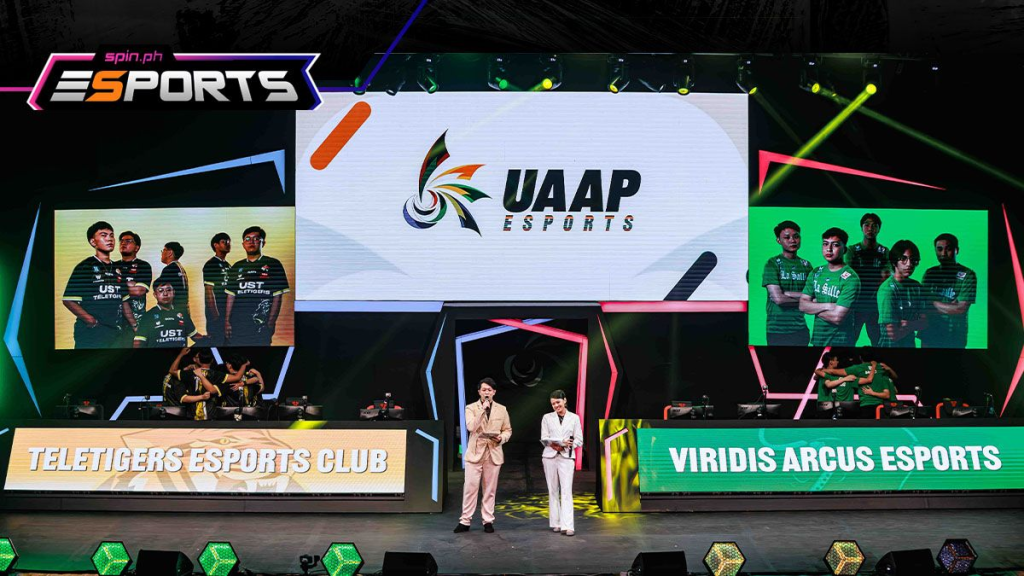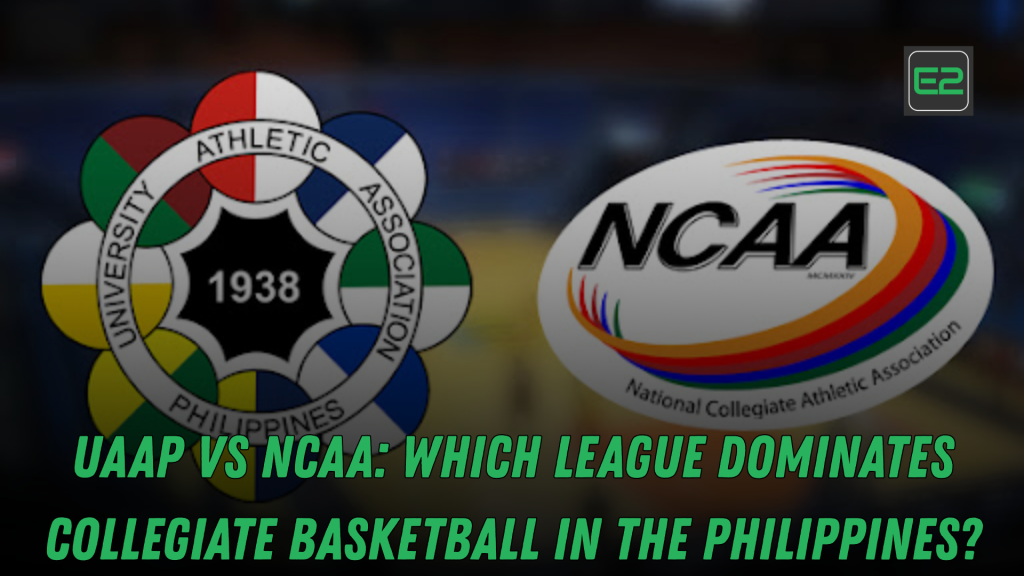Table of Contents
Two Titans of Philippine Collegiate Basketball (UAAP vs NCAA)
When it comes to collegiate basketball in the Philippines, two leagues stand above the rest: the UAAP (University Athletic Association of the Philippines) and the NCAA (National Collegiate Athletic Association Philippines). Both leagues boast rich histories, elite programs, and rabid fan bases—but the debate continues: which league truly dominates?
This article takes a closer look at the UAAP vs NCAA rivalry, comparing their structure, talent development, media reach, and overall impact on Philippine basketball. Whether you’re a die-hard fan, a casual viewer, or a curious student-athlete, this guide provides a complete breakdown of which league reigns supreme—and why.
1. Historical Background: NCAA Was First, but UAAP Rose Fast
NCAA Philippines
- Established: 1924
- Founding Members: Ateneo, UP, UST, and others
- Legacy: The oldest athletic association in the country
- Notable Teams: San Beda Red Lions, Letran Knights, Mapúa Cardinals

UAAP
- Established: 1938
- Founding Members: UP, UST, NU
- Modern Members: Includes powerhouse schools like Ateneo, La Salle, FEU, and UE
- Reputation: Gained momentum in the 2000s with growing TV coverage and star players

2. Basketball Talent Development: Where Future Pros Are Made
Both leagues have produced PBA stars and national team players, but recent trends show UAAP pulling ahead in terms of developing elite-level talent.
NCAA Contributions:
- Produced greats like Benjie Paras, James Yap, Calvin Abueva, and Scottie Thompson
- San Beda has been a consistent championship contender and talent hub
UAAP Contributions:
- Home to modern stars like Thirdy Ravena, Kiefer Ravena, Carl Tamayo, and Ange Kouame
- Strong partnerships with international training programs (e.g., Ateneo with Ignite and US NCAA scouts)
Key Differences:
- UAAP players often come from prestigious high school programs (e.g., Ateneo High, NU Nazareth)
- NCAA offers more playing time to “late bloomers” and under-the-radar talents
3. Fan Base and School Rivalries: Who Owns the Culture (UAAP vs NCAA)?
Collegiate basketball is not just about skill—it’s about passion and identity. And in this department, the UAAP leads the charge.
UAAP’s Iconic Rivalries:
- Ateneo vs La Salle – Arguably the biggest college sports rivalry in Southeast Asia
- UP vs Ateneo – Battle of the brightest minds, elevated in recent seasons
- Games often fill MOA Arena and Araneta Coliseum to capacity
NCAA’s Traditional Rivalries:
- San Beda vs Letran – One of the oldest rivalries in Philippine basketball
- Rich in tradition, but often plays second fiddle in mainstream media exposure
Cultural Impact:
- UAAP games trend on social media, attract corporate sponsors, and feature student-led “cheerdance wars”
- NCAA maintains a more intimate and grassroots fanbase, especially in Manila and nearby provinces
4. Media Exposure and Broadcast Reach (UAAP vs NCAA)
In today’s digital era, visibility matters—and here, UAAP has a definitive edge.
UAAP Coverage:
- Broadcast by Cignal TV / One Sports, formerly with ABS-CBN Sports
- Games aired live on free-to-air TV and streaming platforms
- In-depth features, pre-game shows, and player interviews
NCAA Coverage:
- Recently partnered with GMA Network
- Improved in terms of accessibility but still plays catch-up in terms of production quality and hype
Why It Matters:
- Media presence translates to endorsement deals, scouting attention, and school popularity
- UAAP athletes become household names, NCAA stars often break out only at the PBA level
5. Level of Competition and Parity (UAAP vs NCAA)
NCAA:
- San Beda’s dominance defined the league for more than a decade
- Recent upsets (e.g., Letran’s resurgence) show growing parity
- Often praised for its physical, aggressive style of play
UAAP:
- More balance among top teams: Ateneo, La Salle, UP, FEU, NU
- Emphasis on structured play, transition offense, and versatile big men
- Recruitment battles are intense and national in scope
Both leagues offer high-level basketball, but UAAP games are generally seen as closer to international styles, attracting more attention from overseas scouts.
6. Player Academics and University Prestige (UAAP vs NCAA)
UAAP Institutions:
- Known for academic excellence: UP, Ateneo, La Salle
- Degrees from these universities hold strong reputations nationwide and globally
NCAA Institutions:
- Strong programs in business, engineering, and tech
- More accessible to athletes from working-class backgrounds
While academics may not affect on-court performance directly, they impact recruitment, scholarships, and post-playing careers.

Who Really Dominates? A Side-by-Side Comparison
| Criteria | NCAA | UAAP |
|---|---|---|
| Established | 1924 | 1938 |
| Most Championships | San Beda | UE, Ateneo, FEU |
| Top Rivalry | San Beda vs Letran | Ateneo vs La Salle |
| PBA Alumni | Abueva, Yap, Paras | Ravena brothers, Tamayo, Kouame |
| Media Exposure | Growing | Extensive |
| Fan Engagement | Moderate | Nationwide |
| Talent Development | Balanced | Elite pipelines |
Verdict: UAAP dominates in media, modern talent, and fan culture, while NCAA remains a heritage-rich, underrated proving ground.
It’s Not Just a Game—It’s a Legacy
Whether you’re cheering from the bleachers in San Juan or waving banners at MOA Arena, college basketball in the Philippines remains a passionate and deeply cultural experience. The NCAA brings history, grit, and tradition, while the UAAP drives media presence, competitive parity, and stardom.
In the end, both leagues are vital to the growth of Philippine basketball, feeding talent to the PBA and keeping the sport alive at the grassroots and elite levels.

Join the Debate UAAP vs NCAA
Which league do you think dominates Philippine collegiate basketball—UAAP or NCAA?
Share your thoughts in the comments and tag your favorite school. For more breakdowns, stats, and player profiles, subscribe to our basketball newsletter and never miss a beat in the ever-evolving world of college hoops in the Philippines.

